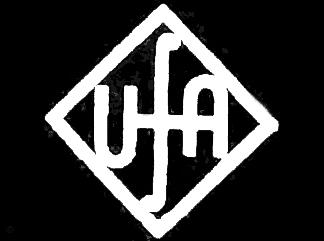Train-and-Equip: Fight for Pluralism in Syria
Posted by Matthew Barber on Monday, March 9th, 2015
written by Nicholas A. Heras
http://www.joshualandis.com/blog/train-and-equip-fight-for-pluralism-in-syria/
(my comments are italicized in dark purple.)
This month, the United States and several of its Middle Eastern allies will begin training Syrian fighters through a revamped train-and-equip program that will form the core first class of Syria’s non-jihadist armed opposition. At this stage, the program will seek to identify, train, and support 5,000 Syrian rebel fighters a year for three years, and will likely involve the cooperation of Saudi Arabia, Turkey, Qatar, and could also include Jordan. Optimally, the end game of this reportedly more robust train-and-equip program will be a Syria that emerges from its civil war with a pluralistic government, the Assad regime removed, and the more ideologically radical elements of the Syrian rebel movement defeated and marginalized.
(From our experience over the last 40 years - going back to our support of rebels in Afghanistan fighting the Afghan government which was backed by the Soviet Union.
We have been fighting there since 2001.
We instituted regime change in Iraq, and have been fighting there since 2003.
We supported regime change in Libya, and there has been chaos ever since.
We do, however, keep warning ourselves of the dangers that come from these chaotic areas.)
The need for a competent rebel force on the ground is heightened by the reality that the large segment of the Syrian population that supports the uprising will continue to need protection and security, but will want it provided by an alternative to the Assad regime. (unproven assumption... are surveys being taken throughout the war zones of Syria? Or are these opinions held by the Syrian "Chalabis" who are living and lobbying in Washington?) This force will also need to be strong enough to secure the local areas in which it is located and to impede the advances of the Islamic State of Iraq and Syria (ISIS), currently the major policy objective driving the revamped program. As proposed today in a Foreign Policy article by former Ambassador to Syria Robert Ford, a refashioned rebel army with a unified command and control structure that can enforce discipline within the ranks will be vital, as will its need to appeal to Syria’s minority communities.
(Admirable technical discussion. Now all we need is a reference to "winning hearts and minds".)
Ford referred to the current train-and-equip program as “too little, too late,” and he makes a compelling argument for the administration’s need to either “undertake a major effort or walk away.” But while a target of 15,000 fighters trained over three years may sound insufficient to fundamentally shift the conflict, the effort can have great impact if it serves as a standard-bearing “train-the-trainer” model that builds up over time, from community to community.
(Good. There is a model: "train-the-trainer". Now I feel that I can see the "light at the end of the tunnel.)
From the outset, however, the train-and-equip program will have to answer questions about how its objective for the state will be an improvement over the current Syrian republic which encompasses diverse sectarian and ethnic backgrounds, despite the authoritarian power of the Assad family, the corrupt Ba’ath syndicate deep state, and its brutal security system. (The use of perjorative descriptions - authoritarian, corrupt, etc. - is an example of politicking and rhetoric, not any kind of intelligent analysis.) Nevertheless, the current Syrian republic, its advocates point out, has a longer and more practiced history of relative pluralism than that of the Syrian opposition, which has largely been splintered by factionalism and its armed groups heavily influenced by militant Islamist ideology. These are valid points, and the United States and its allies will need to address them in order to build up the capacity of the opposition to participate in a transition from the Assad regime.
Thus, United States’ strategic objective for guiding the train-and-equip program should be to build into the training a firm ideological component that seeks a pluralistic and democratic order in Syria, promoting the equal rights of all of Syrians. This will be a challenge, as the U.S.-led effort must reconcile the previous influence of its participating partners, particularly Qatar and Turkey, who have much-criticized records of influencing the armed opposition toward a more militantly Islamist ideological position. It will also need to respect and incorporate, but also moderate, the conviction of many Syrian rebel fighters that they are on a religious mission to fight a corrupt regime. Achieving the right balance in this ideological model, and making it stick for the entirety of the rest of the conflict to follow, would be an accomplishment with potentially exponential effects on the course of the war and its aftermath...
(This paragraph has admirably described a situation which present policy makers have no idea how to go about achieving, other than civil war and hope for the best.)
Is it, or is it not, a corruption of the very concept of Democracy to spread chaos under the guise of well reasoned campaigns of violence?
Is it not a diseased notion of Democracy to establish regimes of perpetual instability, to flood the population of refugees and displaced persons, and to condemn generations to lives of bare subsistence?
All the logic of the Best and the Brightest brought us to disaster in Vietnam, and it seeks to do so ever and ever again.
--


















No comments:
Post a Comment